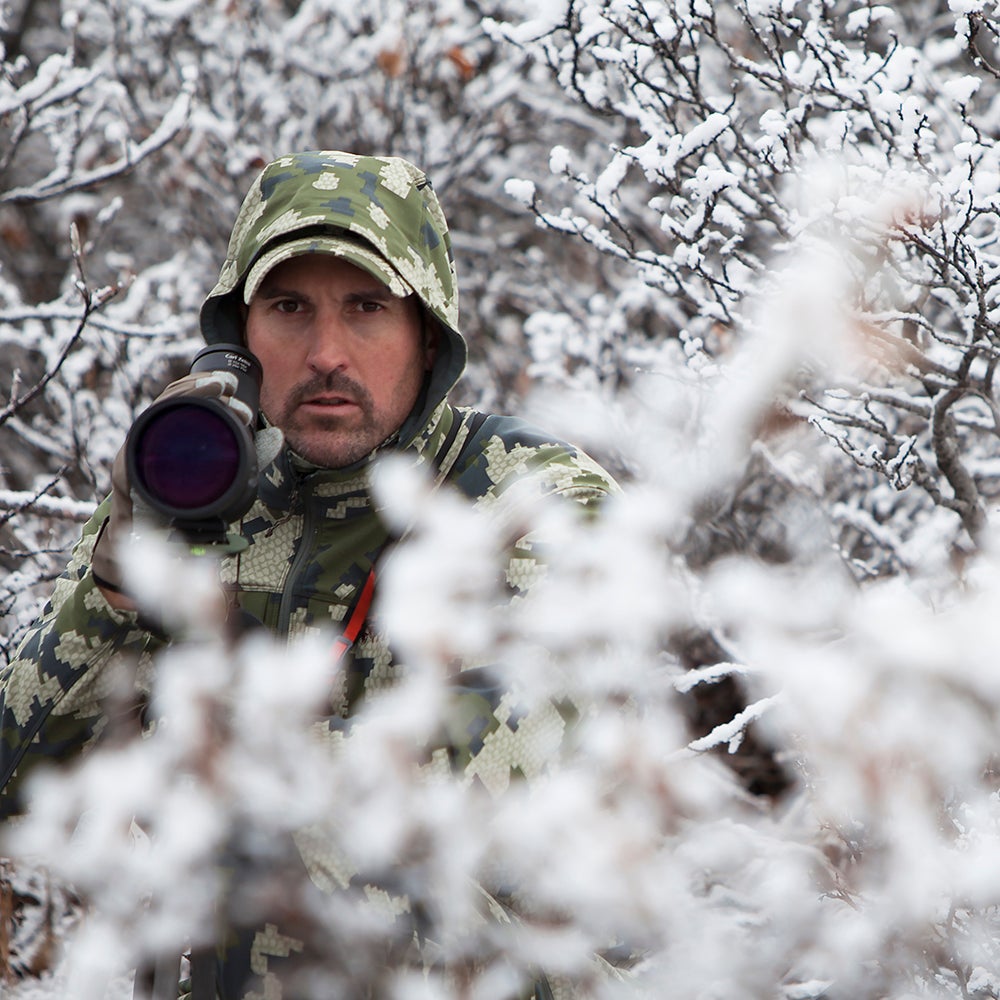Clarification: We updated this piece to list Jonathan Hart as a co-founder of Sitka.
Ten years ago, camouflage tried to mimic sticks, leaves, and bark. The theory was that to hide, we needed to look like our surroundings. Today, the most successful patterns are as eye-catching as they are vibrant. That removes the ability of an animal to determine your shape or movement and works with the natural shadows and texture of a landscape to disguise your presence. And that’s thanks to Jason Hairston, whose new brand is changing what we look like to nature.��
It Started on a Mountain
After retiring from the NFL and making a go of commercial real estate, Hairston found the time to return to his original passion—big-game hunting. Pursuing sheep through arctic mountains is one of the toughest physical challenges on earth, combining mountaineering with long-distance backpacking. The dressed weight of a Dall sheep can exceed 140 pounds—a huge amount of weight to carry miles through mountainous terrain, off-trail.��This kind of hunting requires high-performance, durable clothing, but Hairston was unable to find technical apparel that also hid his presence.��
“At the time, I was buying most of my equipment for hunting out of REI,” he says. High-end mountaineering gear got the job done. While on a trip with his friend Jonathan Hart, the two realized that presented an opportunity. “We just got talking about how terrible the hunting gear you could buy was compared to outdoors gear, and came up with a concept for bridging that gap.” In 2006, Hairston and Hart co-founded .��
Their idea was to bring the technical fabrics of outdoors gear to the hunting market, but they quickly ran into a major roadblock: the two dominant patterns at the time— and —dictated the fabrics licensees could use. And those fabrics just weren’t good enough. “The only way for us to create a new product line was to either create our own pattern, which we had no idea how to do, or go find someone who would sell us something we could print on these technical fabrics,” Hairston explains. He found that partner in a new company eager to break into the space, Moth Wing Camouflage, but while he liked the pattern, “the colors were terrible.”
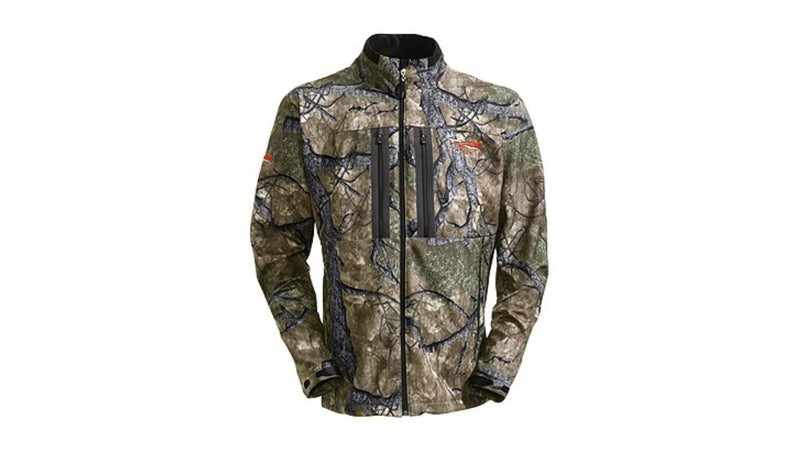
Hairston and Hart set about redeveloping the Moth Wing pattern in “just grey and brown, and stuff that worked well in the mountains, from my lifelong experience,” he says. The result was Mountain Mimicry by Moth Wing.��“That we could print it on these performance fabrics was a big differentiator for us getting into the market,” says Hairston. “At the time, if you went into Cabela’s, everyone was in Mossy Oak or Realtree, there was no way to differentiate yourself visually.” Which is what Sitka did.��
“For the first time, we had a brand that stood for the kind of aspirational mountain hunting that everyone dreams of doing, and which looked different and performed different,” he says. “That was a big change in the market.��I introduced the technical apparel category to hunting.”

The Role of Science
With a new category of technical clothing reaching a new audience, W.L. Gore partnered with Sitka to bring its fabrics and expertise to the hunting market. Part of that expertise included one of the first scientific approaches to camouflage design. “They can dissect the eye and look at the cones to determine what colors animals can and can’t see,” Hairston says. The partnership with Gore eventually resulted in the Optifade pattern the company uses today. Rather than mimic a given environment, it attempted to confuse an animal’s ability to perceive the human silhouette and its direction of movement. “The premise of Optifade is to prevent the animal from recognizing the hunter as a predator,” writes Gore.
But Hairston still thought he could improve on the design. So in 2010 when W.L. Gore acquired Sitka, Hairston left to pursue his own ideas about camo.
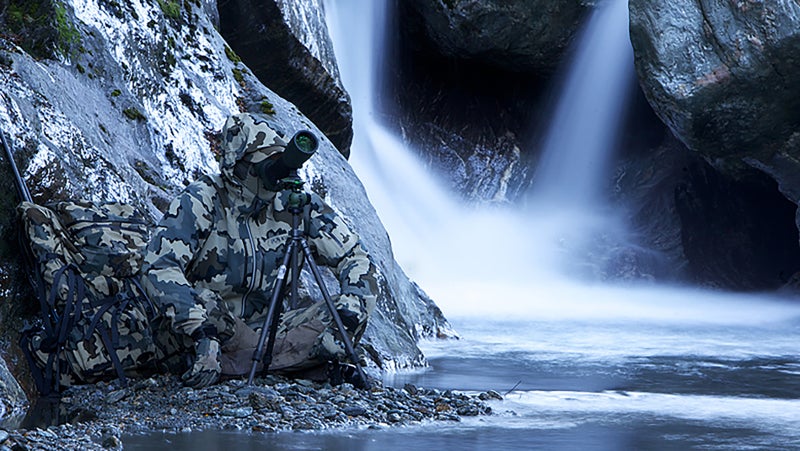
Look Like a Predator
“On a trip to Africa, I saw wild dogs, and realized how hard they were to see because of the contrast in their color palette,” says Hairston. “They go from big chunks of really dark to really light, and it was really hard to pick up on them because you’d glimpse bits and pieces of them, and you couldn’t put that together as a single animal.”
The African wild dog is the most successful predator on that continent. Its coat doesn’t try to imitate its surroundings, but rather it breaks up its silhouette. If it works for them, that approach must be effective at stalking ungulates. At least that was Hairston’s theory.
“I started looking at snakes and other predators out there, and saw the contrast was pretty consistent consistent across a range of predators, whether it be leopards, or tigers, or snakes, or even fish,” says Hairston. “They weren’t trying to mimic anything, they were just trying to break themselves up with light and dark colors. That was my influence for our first pattern, Vias.”
That distinctive, high-contrast pattern has defined Hairston’s new brand, KUIU. With the company, he’s set out to not just bring technical clothing to the hunting market, but to make the most technically innovative and high-performance outdoors clothing, period. And do that at a price which remains accessible, thanks to a direct-to-consumer business model.��
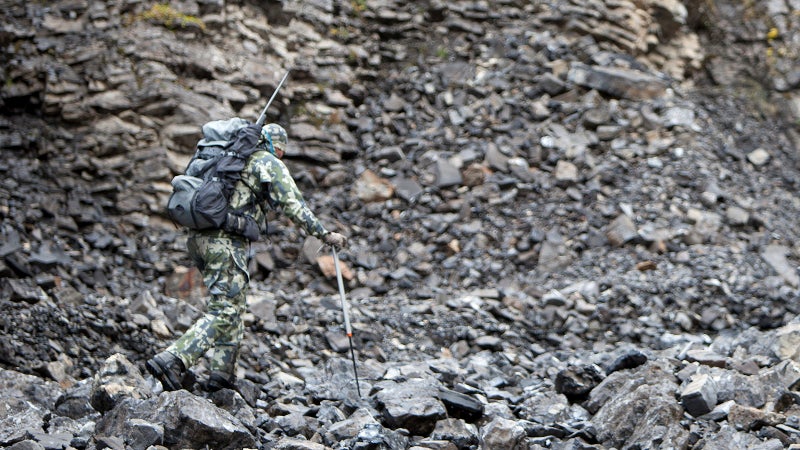
How KUIU Develops New Patterns
The technical merits of KUIU’s waterproof-breathable hard shells, light and flexible soft shells, and sweat-wicking merino wool base layers play a role in determining the colors and patterns KUIU can apply.��“I couldn’t heat transfer the pattern,” explains Hairston. “I had to wet transfer it.” That process restricts any garment he wants to produce to five or six colors in any given pattern. But that shouldn’t limit the camo’s effectiveness.��
“The prey we’re hunting can’t see colors, so it really has to do more with shading than it does color,” Hairston continues. “The consumer gets caught up in all that, but the reality is the animals could care less about the colors. It’s about the contrast. The animals have a tendency to look at light or dark, but not light and dark to make out a single form. We’re using this contrast to break up the human form.”
When he’s developing a new pattern, Hairston looks at the environment he intends to use it in, then print out large cards of test pattern, and takes them into the field. “We’ll put those out in a bunch of different environments, then we’ll look at it in low light, and in bright sunlight,” he explains. “Then we’ll bring it back, make adjustments, and then repeat that process as we go to our fabrics.”
The last step? Hairston takes the new pattern into the field himself to see how animals respond. “I’ve seen amazing results,” he describes. “Animals just look right through you.”
KUIU now has two patterns of camouflage—Vias and Verde—and is about to launch another. “The tans and grey, and dark browns and black, that’s for more big, open hillside type environments, like you’d see up in sheep country,” says Hairston of Vias. “The Verde pattern is a little smaller on the contrast, and on the shade of contrast between the lights and darks. That was done for closer environments, and between the two, more universal environments”
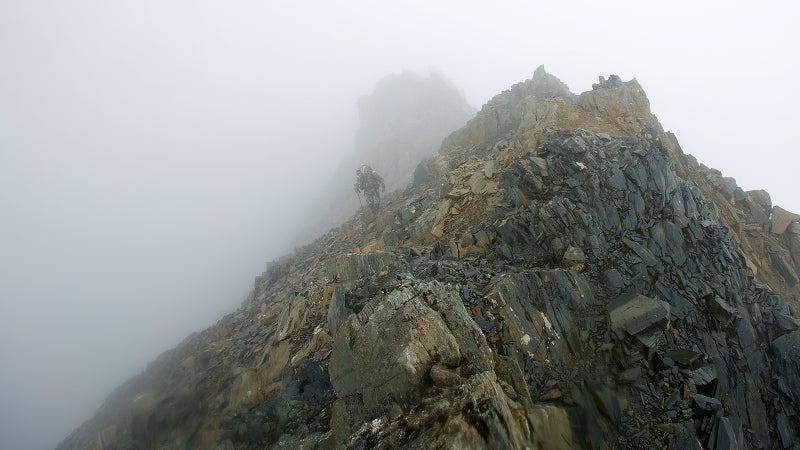
Hairston’s patterns may be effective on animals, but they also catch the human eye. So, they’re not terribly applicable to military applications. How does that approach differ? “I’m working right now on a project with special ops, developing a pattern for them,” Hairston tells us. “Humans perceive stuff differently, and they use optics to find things. With the human eye, it can see the contrast move, so for military camo, the approach is just to try and blend in as much as possible. They’re willing to give up the human form in silhouette, and blob similar colors to disguise movement.”
That “blob” is exactly what Hairston feels is the wrong approach to fooling ungulates and other prey animals though. He’s heavily critical of other patterns in the market that rely on minute detail, and mimicry, telling us, “at distance they just blob into a single form.”
“Nature’s been my biggest influence,” Hairston concludes. “Predators evolved this way because they prey can’t see them well. If patterns that mimic leaves, sticks, limbs, or trees were the most effective way for predators to stalk in on prey, they would be green and they would look like a leaf, but they don’t. Evolution has proven that contrast is the right approach for what we do as predators.”����


